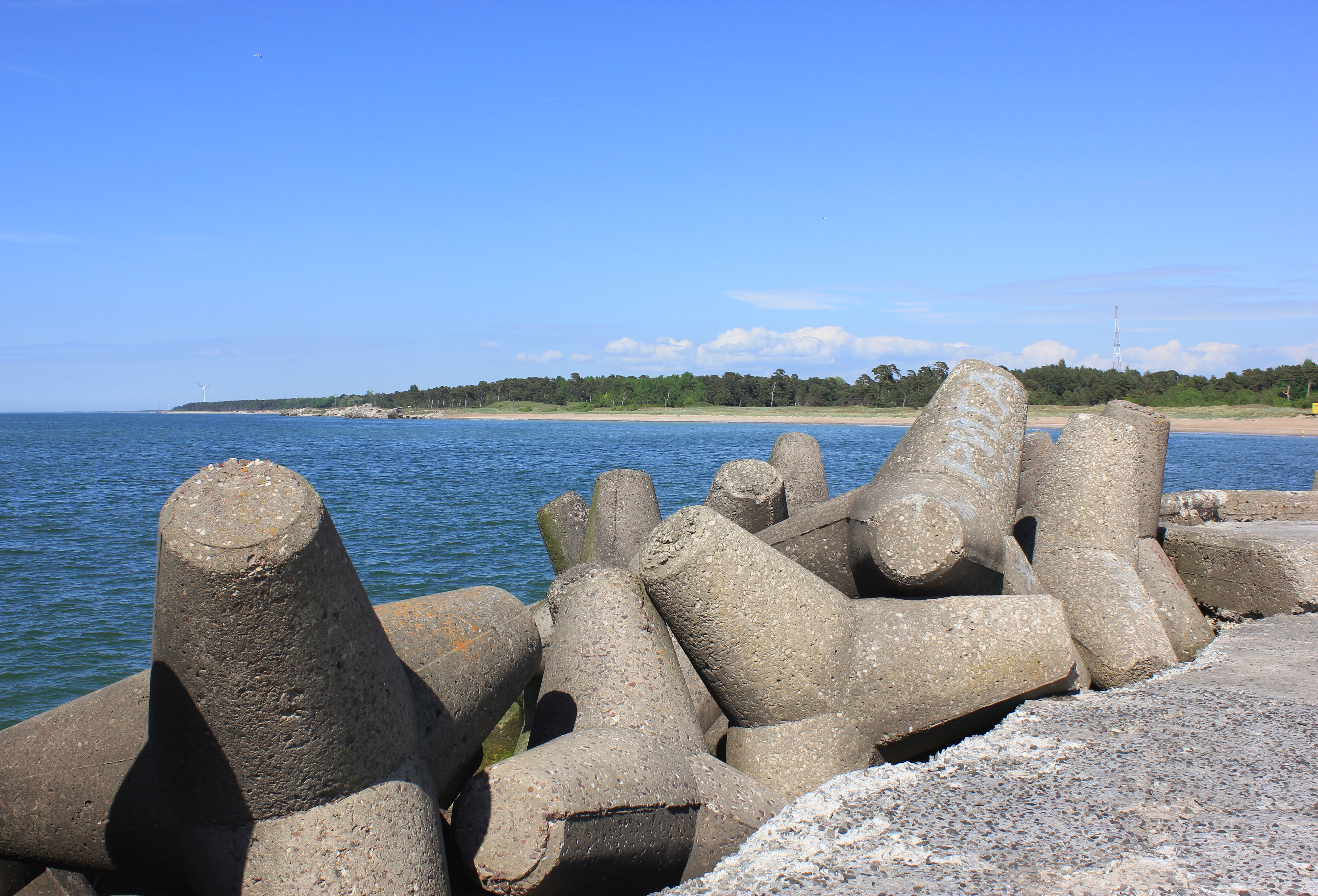Tetrapod (structure) on:
[Wikipedia]
[Google]
[Amazon]


 A Tetrapod is a form of
A Tetrapod is a form of


 A Tetrapod is a form of
A Tetrapod is a form of wave-dissipating concrete block
A wave-dissipating concrete block is a naturally or manually interlocking concrete structure designed and employed to minimize the effects of wave action upon shores and shoreline structures, such as quays and jettys.
Examples include such propr ...
used to prevent erosion caused by weather
Weather is the state of the atmosphere, describing for example the degree to which it is hot or cold, wet or dry, calm or stormy, clear or cloudy. On Earth, most weather phenomena occur in the lowest layer of the planet's atmosphere, the t ...
and longshore drift, primarily to enforce coastal structures such as seawall
A seawall (or sea wall) is a form of coastal defense constructed where the sea, and associated coastal processes, impact directly upon the landforms of the coast. The purpose of a seawall is to protect areas of human habitation, conservatio ...
s and breakwaters
A breakwater is a permanent structure constructed at a coastal area to protect against tides, currents, waves, and storm surges. Part of a coastal management system, breakwaters are installed to minimize erosion, and to protect anchorages, h ...
. Tetrapods are made of concrete, and use a tetrahedral
In geometry, a tetrahedron (plural: tetrahedra or tetrahedrons), also known as a triangular pyramid, is a polyhedron composed of four triangular faces, six straight edges, and four vertex corners. The tetrahedron is the simplest of all the ...
shape to dissipate the force of incoming waves by allowing water to flow around rather than against them, and to reduce displacement by interlocking.
Invention
Tetrapods were originally developed in 1950 by Pierre Danel and Paul Anglès d'Auriac of Laboratoire Dauphinois d'Hydraulique (nowArtelia
Artelia is a French design firm specializing in engineering, project management, and consultancy. Launched in 2010, Artelia is active building construction, water, energy, environment, industry, maritime operations, transportation, urban develo ...
) in Grenoble, France, who received a patent for the design. The name was derived from Greek, with ''tetra''- meaning four and -''pode'' meaning foot
The foot ( : feet) is an anatomical structure found in many vertebrates. It is the terminal portion of a limb which bears weight and allows locomotion. In many animals with feet, the foot is a separate organ at the terminal part of the leg made ...
, a reference to the tetrahedral
In geometry, a tetrahedron (plural: tetrahedra or tetrahedrons), also known as a triangular pyramid, is a polyhedron composed of four triangular faces, six straight edges, and four vertex corners. The tetrahedron is the simplest of all the ...
shape. Tetrapods were first used at the thermal power station in Roches Noires in Casablanca
Casablanca, also known in Arabic as Dar al-Bayda ( ar, الدَّار الْبَيْضَاء, al-Dār al-Bayḍāʾ, ; ber, ⴹⴹⴰⵕⵍⴱⵉⴹⴰ, ḍḍaṛlbiḍa, : "White House") is the largest city in Morocco and the country's econom ...
, Morocco, to protect the sea water intake.
Adoption
Tetrapods have become popular across the world, particularly in Japan; it is estimated that nearly 50 percent of Japan's coastline has been covered or somehow altered by tetrapods and other forms of concrete. Their proliferation on the island of Okinawa, a popular vacation destination in Japan, has made it difficult for tourists to find unaltered beaches and shoreline, especially in the southern half of the island.Similar designs
The tetrapod inspired many similar concrete structures for use in breakwaters, including the Modified Cube (United States, 1959), the Stabit ( United Kingdom, 1961), the Akmon ( The Netherlands, 1962), theDolos
A dolos (plural: dolosse) is a wave-dissipating concrete block used in great numbers as a form of coastal management. It is a type of tetrapod. Weighing up to , dolosse are used to build revetments for protection against the erosive force of ...
( South Africa, 1963), the Stabilopod ( Romania, 1969), the Seabee ( Australia, 1978), the Accropode
Accropode blocks are wave-dissipating concrete blocks designed to resist the action of waves on breakwaters and coastal structures.
History
The Accropode is a single-layer artificial armour unit developed by Sogreah in 1981. Accropode concret ...
(France, 1981), the Hollow Cube ( Germany, 1991), the A-jack (United States, 1998), and the Xbloc (The Netherlands, 2001), among others. In Japan, the word ''tetrapod'' is often used as a generic name for wave-dissipating blocks including other types and shapes.
See also
* * * * * * * * * * *References
Further reading
* * * * * {{coastal management Coastal engineering Wave-dissipating concrete blocks